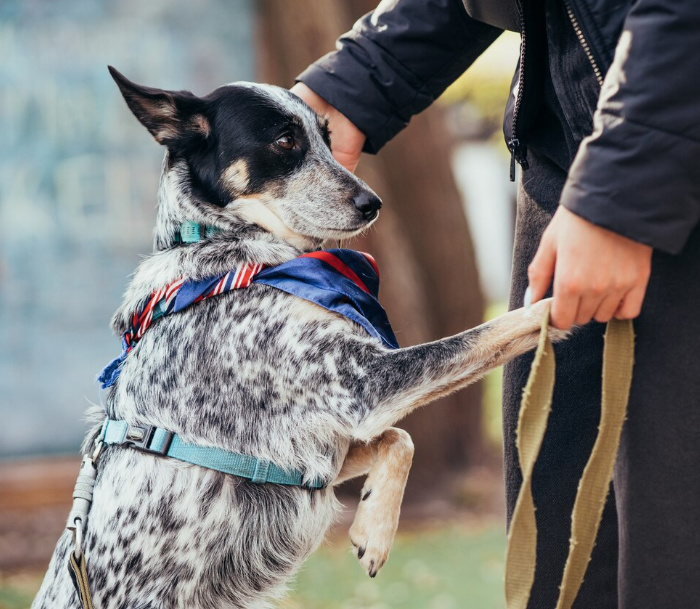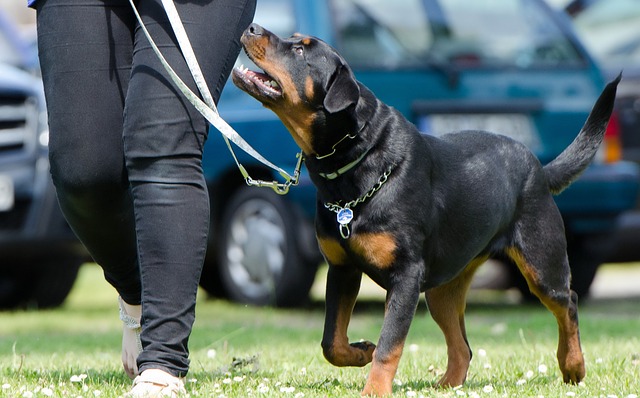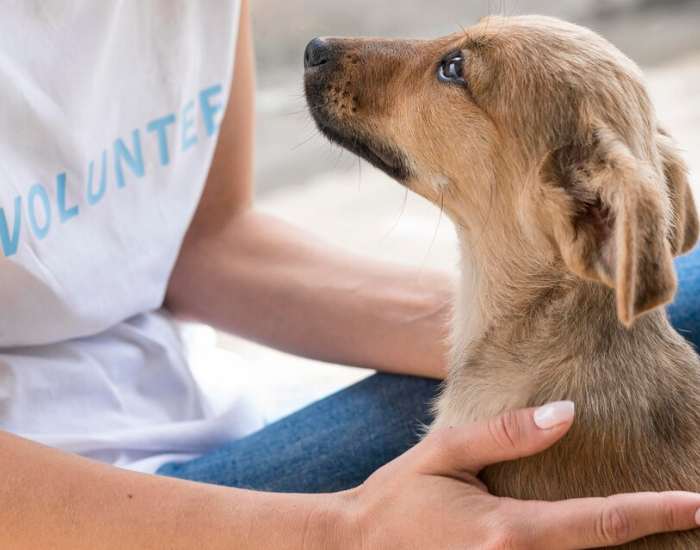Aid dogs, typically referred to as assistance dogs or service dogs, are individually trained to support people with disabilities, helping them gain independence, confidence, and safety in their daily lives. Whether assisting someone with mobility challenges, hearing impairments, medical conditions, or psychiatric disabilities, these dogs provide invaluable aid through specialized training.
Today, we’ll explore the nature of aid dogs, the specialized training they undergo, the specific tasks they can be trained to perform, and some key aspects of their legal status, rights, and responsibilities, especially in public.
What Is Aid Dog Training?
Aid dog training is a highly specialized process where dogs learn specific tasks that are directly related to their handler’s health condition and unique needs. Unlike typical pet training, aid (assistance/service) dog training involves teaching skills that can improve quality of life, promote safety, and reduce the impact of a disability.
Training usually begins when dogs are puppies or young adults. As a general rule, the sooner the training begins, the better, because puppies acquire new skills more easily. However, if you have an adult dog, don’t get discouraged! If your furry friend has the right temperament for the job, training can still succeed, provided you are patient and committed to the process.
Aid dog training includes three key elements: basic obedience training, specific task-based training, and good manners in public. Socialization is also a valuable part of the process, which helps ensure that aid dogs are accustomed to various environments and stimuli, including other animals, people, smells, and sounds.
Each of these components is essential in ensuring a dog can become a reliable assistance/service dog and support their handler in all types of situations and surroundings.
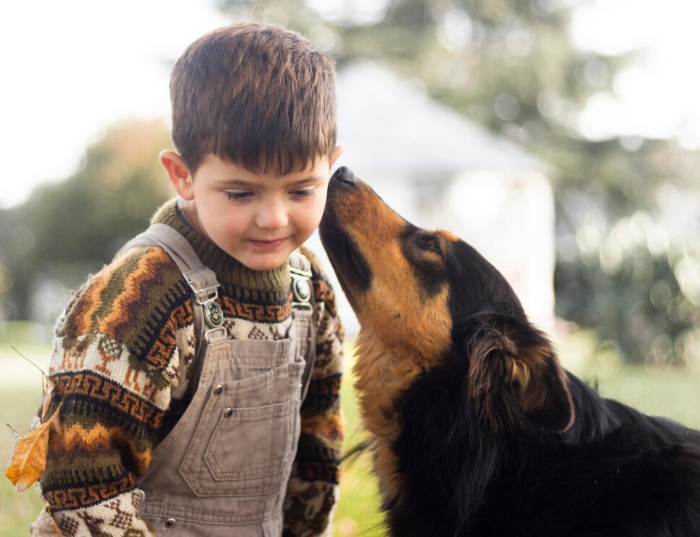
Types of Aid Dogs and Their Roles
Guide Dogs
Guide dogs assist people with visual impairments by navigating obstacles, stopping at curbs and stairs, and providing safe travel routes.
They are trained to disobey unsafe commands, such as crossing a road when a car is approaching—a skill known as "intelligent disobedience."
According to the Whole Dog Journal:
“Amazingly, guide-dog trainers report that this skill has no effect on the dogs’ willingness to respond reliably to the “go forward” cue when there’s not an obstacle. The dogs readily understand that the refusal response is expected and accepted only when there is a potential hazard in the path. That’s some impressive cognitive thinking!”.
Guide dogs also help their handlers maintain a consistent walking pace and can locate specific objects like doors, elevators, and empty seats.
Hearing Dogs
Hearing dogs alert deaf individuals or individuals with hearing impairments to important sounds like doorbells, alarms, or the sound of a baby crying.
They often use tactile stimulation, such as pawing or nudging, to get their handler’s attention before leading them to the source of the sound.
These dogs are also trained to stay calm and focused in busy and noisy environments where important sounds might go unnoticed.
Mobility Assistance Dogs
Mobility assistance dogs help handlers with physical disabilities by retrieving items, opening doors, turning lights on/off, and providing balance support.
They can assist with dressing or undressing, pulling a wheelchair, or even helping their handler transfer from one position to another.
Many are also trained to press emergency buttons or carry items in a specialized harness or backpack.
Medical Alert Dogs
Medical alert dogs detect the onset of medical episodes such as seizures, changes in blood sugar levels, or irregular heart rates.
Their training is typically based on scent detection, and involves picking up on subtle changes in the body odor before symptoms become visible.
In some cases, these dogs can also be trained to retrieve medication, activate medical alert systems, or seek help from another person.
Medical alert dogs are primarily trained to assist individuals whose health conditions cause physiological changes that alter their scent.
Psychiatric Service Dogs
Psychiatric service dogs support people with mental health challenges by interrupting anxiety episodes, providing grounding during PTSD flashbacks, or reminding their handler to take medication.
Performing Deep Pressure Therapy (DPT), waking the owner from nightmares, and providing crowd control and guiding the owner to a safe space are other valuable tasks these dogs can be trained to perform.
With consistent training, they may learn to detect early signs of a mental health crisis and take action to prevent the issues from escalating.
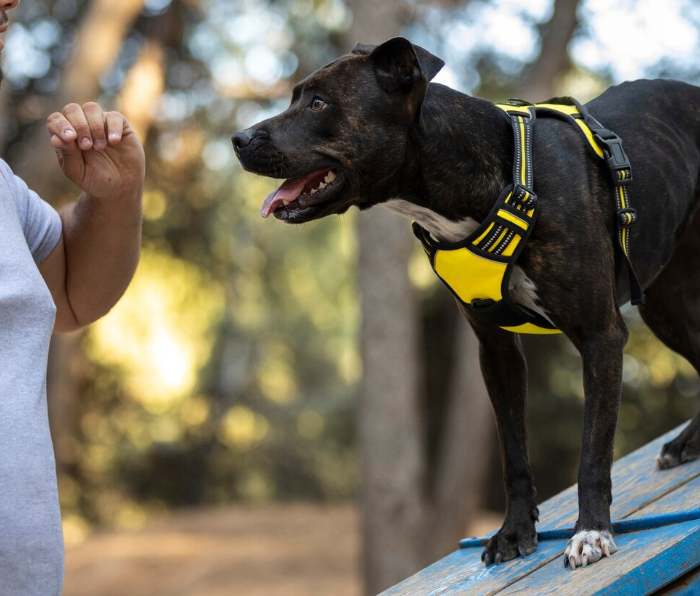
Key Components of Aid Dog Training
Basic Obedience Training
Mastering commands like ‘sit’, ‘stay’, ‘come’, and ‘heel’ ensures reliability and control in all situations.
Obedience training provides the foundation for more advanced skills and helps establish mutual respect between the dog and handler. Consistency is crucial, as these commands must be performed even in distracting or stressful environments.
A well-trained dog who responds promptly to cues is not only safer but also more confident in their role.
Task Training
Teaching the dog specific assistance
skills tailored to their handler’s needs, such as retrieving
medication, opening doors, or applying deep pressure during anxiety
attacks. Tasks are chosen based on the individual’s health
condition and what will most enhance their independence.
Along with responding to their handler’s cues, dogs often learn to perform tasks in response to changes in their handler’s behavioral or emotional patterns and physical condition.
This type of training is highly individualized and may take weeks or months to master, depending on the complexity, the dog’s temperament, and the handler’s consistency.
Public Access Training
Learning to behave calmly in public spaces, ignoring distractions, and navigating busy environments like stores and restaurants.
This training ensures the dog can accompany their handler without causing disruptions or safety concerns. Dogs must be comfortable walking through crowds, lying quietly under tables, and avoiding attention from strangers.
Exposure to real-world settings during training is key to helping them remain focused and composed under pressure.
Socialization & Generalizing Behaviors
Exposing dogs to various
environments, people, animals, sounds, and situations helps build
confidence and adaptability. Furthermore, proper socialization
reduces fear-based reactions and helps dogs remain calm when they
encounter something new or unexpected. Socialization is most
effective when started young, but ongoing exposure throughout a dog’s
life is still important!
A well-socialized aid dog is less likely to become anxious or distracted in unpredictable settings.
Generalizing behaviors can also be considered part of the socialization process. It involves practicing learned behaviors in various environments with different stimuli and distractions to ensure the dog can perform the specific tasks and respond to cues reliably, regardless of the surroundings.
Handler Training
You may wonder what exactly "handler training" means. While it’s true that both the handler and their dog go through the training process together, each learning to become a reliable part of a service/assistance dog team, the situation is a bit different when individuals receive fully trained aid dogs.
In these cases, the dog has already completed rigorous training and knows what’s expected of them in their role. The handler, however, still needs to learn how to work with the dog effectively and maintain the same level of consistency and reliability.
That’s why most organizations that provide trained dogs also offer ongoing support to ensure the handler-dog team can function successfully over time.
Equipping the handler with the skills to communicate clearly, reinforce training, and maintain a strong working partnership is an essential part of the process. Handlers learn how to give effective cues, reward appropriate behavior, and address any issues that may arise.
Building trust and consistency in the relationship ensures the dog can perform their tasks with confidence and reliability. That said, successful aid dog teams depend just as much on the handler’s knowledge and consistency as they do on the dog’s training.
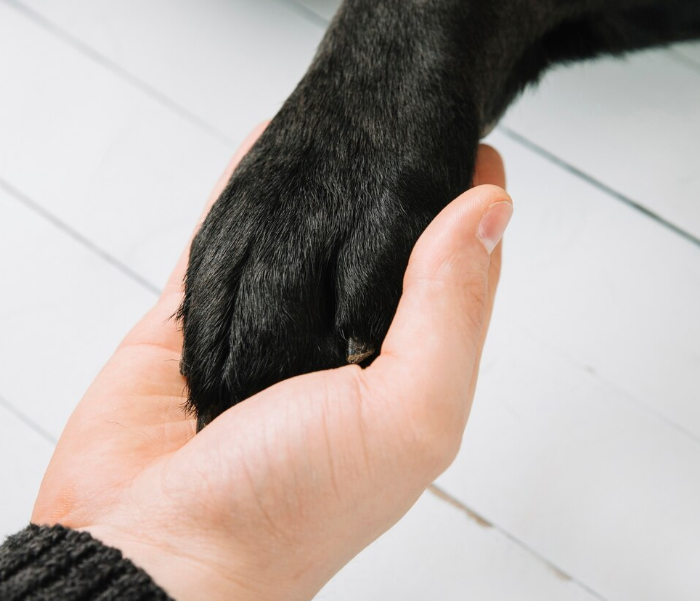
Benefits of Aid Dog Training
Increased
Independence
Aid dogs enable their handlers to perform everyday tasks that might otherwise be difficult or impossible. From opening doors and picking up dropped items to alerting to medical issues, these dogs allow their handlers to navigate life with greater autonomy.
Being more independent means needing less help from others, which can really boost a person’s confidence and sense of control over their own life.
Improved Safety
The tasks that aid dogs can be trained to perform can truly be life-saving!
Whether it’s alerting to a seizure, bracing to prevent a fall,
or helping navigate a busy street, these dogs act as reliable safety
partners.
Their presence can prevent accidents and enable handlers to feel more secure in unpredictable environments.
Emotional
Support
The bond formed through training and teamwork often offers psychological benefits like reduced anxiety, loneliness, and depression. Aid dogs provide comfort during difficult moments and can help ground their handlers in times of emotional distress.
While assistance/service dogs don’t provide comfort and companionship only, as they undergo specialized task-based training and are considered medical equipment, their presence can also provide a calming effect. This dual role of practical and emotional support can make a big difference in their handler’s overall well-being and quality of life.
Simply having a well-trained dog by one’s side can make navigating social, medical, or daily challenges less overwhelming.
Social
Inclusion
Well-trained aid dogs help their handlers participate more fully in social life. These dogs can bridge social gaps, encourage interaction, and reduce the sense of isolation that many people with health conditions experience.
They also enable handlers to access public spaces with greater ease and confidence, leading to more meaningful engagement with the world around them.

Challenges and Considerations
Training an aid dog takes a lot of time, patience, and dedication. It’s also good to remember that not every dog may have the right temperament for service/assistance dog work. Factors like temperament, intelligence, trainability, and health all make a big difference. Additionally, service/assistance dog regulations may vary a lot depending on your location, so handlers need to familiarize themselves with the local laws in advance.
The whole training journey can take months or even years, and there will likely be bumps along the way that require flexibility and perseverance from both the dog and the handler.
Training and care can also be expensive, which can be a real barrier for some people.
Furthermore, there are still individuals who don’t fully understand the nature of assistance/service dogs, which can lead to unpleasant situations. So, spreading awareness and standing up for your and your assistance/service dog’s rights is just as important as the training itself!

Legalities, Rights, & Responsibilities
Aid dogs and their handlers are protected by laws designed to ensure access and fair treatment in public spaces. However, these laws vary by country and region.
While the primary purpose of these laws is to guarantee that handlers can bring their service dogs into places like restaurants, stores, public transportation, and workplaces, and receive products and services on the same terms as the public, the specific documentation and requirements for assistance dogs can differ significantly.
In some countries, like the UK and the US, dog owners are legally allowed to train their pet dogs as assistance/service dogs.
According to Assistance Dogs UK (ADUK):
"In the UK, assistance dogs can be owner trained, trained by an independent trainer or trained by a charity (an ADUK one or a non-ADUK one). It doesn’t matter who trained them or where the training took place but the key thing is they are highly trained.
Here at ADUK we don’t train or provide assistance dogs as this is done by our assistance dog member organisations."
According to the Equality and Human Rights Commission:
"Assistance dogs can also be trained by their owners. The owner selects their own dog to fit their requirements."
According to the Americans with Disabilities Act:
“People with disabilities have the right to train the dog themselves and are not required to use a professional service dog training program”.
In other countries, aid dogs must be certified through Assistance Dogs International (ADI), the International Guide Dog Federation (IGDF), or by an accredited local trainer.
Luckily, there are many organizations that conduct evaluations of self-trained service dogs to ensure the same high training standard and help teams enjoy public access.
However, handlers also have responsibilities—they must ensure their dogs behave appropriately, remain under control, and do not pose a health or safety risk to others.
Proper documentation or certification might be required in some areas, so it’s important for handlers to stay informed about local regulations. Knowing your rights and responsibilities helps create a smoother experience for both parties, the assistance/service dog teams, and the public.





